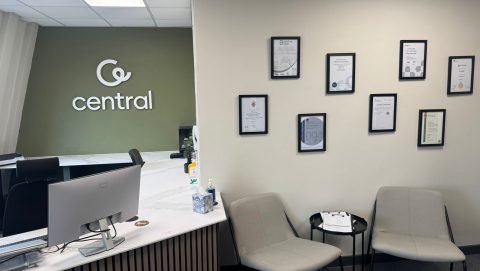
2022 will see UK businesses entering a third year of living with the consequences of Covid-19 and across all industry sectors we have seen winners and losers. One of the key success factors has been a motivated workforce who have felt supported by their employers and in return achieved results under difficult circumstances, whether working from home, in the workplace or under a hybrid arrangement.
Why should you monitor your employees’ wellbeing?
Employers should carry out regular wellbeing health checks to avoid losing sight – literally and figuratively – of those who are at risk of declining mental health and to provide help and support where needed. Put most simply, a team that isn’t operating at full strength will struggle to achieve the goals you are setting for your business.
What does the law require?
Employers need to be vigilant and aware due to their obligations under the Equality Act 2010. While there are nine protected characteristics under the Act, mental health is closely linked to disability discrimination.
Under the Equality Act, an employer must ensure they do not treat a disabled employee less favourably than a non-disabled employee and that their staff members treat disabled employees with dignity and respect. There are also obligations to consider making reasonable adjustments for disabled employees.
Carrying out a wellbeing health check
With this legal obligation in mind, how then can a business adapt its approach to ensure that the wellbeing of employees is properly managed? Here are four self-assessment questions that don’t get asked very often, but are fundamental to assessing the workplace:
How visible are our people?
This is a critical question for those with employees working full time remotely. It is essential that all employees are visible when working in a virtual environment. Consider what new meeting culture is being unconsciously created – is it the norm to have cameras off and most attendees on mute? If so, you might want to consider establishing a meeting policy that insists on visibility.
Consideration should also be given for employees on medication for mental health issues that alleviate their symptoms. While they may well be able to function with the aid of medication, they may still be considered disabled and are at greater risk of going unnoticed and therefore unsupported.
How good are our virtual facilitation skills?
The virtual meeting is the main space for employees to engage with their workplace, so how well can you facilitate good, high-quality meetings? Observe how inclusive they are:
- Is everyone engaged and able to contribute?
- Is the facilitator listening to those who are contributing?
- How is someone with their camera turned off managed?
- What unspoken rules and norms are developing in this virtual workplace?
By asking these questions you gain more conscious control of the type of work environment you want to foster – one that promotes inclusivity and positive mental wellbeing for all.
How have professional opportunities been affected?
Another risk factor of remote working is the damage to continuous professional development and promotional opportunities. This links to both employee visibility and the quality of meeting facilitation to ensure that all staff are getting a fair amount of exposure, opportunity, and consideration. Questions to ask include:
- Is your staff intranet or other sources of training courses up to date and available to all?
- Are you making all staff aware of the latest job/promotion opportunities?
- Are you still holding appraisals and setting goals?
- When was the last time staff had the chance to speak with senior managers?
- Are you communicating plans and business objectives to everyone, including remote workers?
How conscious are we?
One of the biggest risk factors for any employer is ‘mindlessness’ – not being conscious of the cultures being created in the workplace, especially in the new mixed real/virtual world of hybrid working. Ask yourself:
- How often have you sat back and just watched your meetings unfold?
- Are your workplace behaviours changing without you realising?
- Are you participating actively in the decisions that are shaping your business?
Drawing conclusions and taking action
The key to a successful wellbeing health check is to answer the questions honestly and be prepared to accept the negatives as well as the positives. Your employees are a valuable source of feedback and incorporating this into your plans will help you build a stronger team, keep on the right side of the Equality Act and help your business thrive, not just survive, in 2022.
Minal Backhouse is managing director of Backhouse Solicitors and Amie Craven an organisational consultant at Inspire Wellbeing Services
Source – https://www.peoplemanagement.co.uk/





















